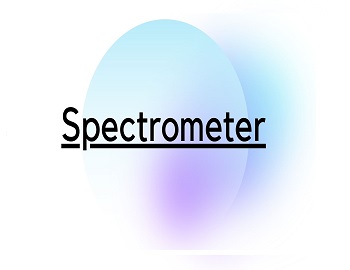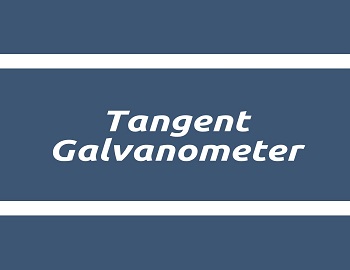Table of Contents
What is Spectrometer?
A spectrometer is an optical apparatus used to produce and analyze the pure spectrum. It is also used to find the refractive index of the material of Prism.
Construction of Spectrometer:

It essentially consists of three parts i.e.
- Collimator.
- Turn Table or Prism Table.
- Telescope.
Collimator- It consists of two co-axial cylindrical tubes. One tube can slide inside the other tube. The free end of the inner tube carries a slit S and the free end of the outer tube carries a lens L1. The slit is illuminated by a source of light. When the slit is at the focus of lens L1, a parallel beam of light comes out of the lens L1.
Prism Table- It is a horizontal metallic circular plate P, on which the prism can be placed. The prism table is mounted horizontally on a vertical stand. The Prism table is provided with a circular scale. The circular scale is graduated in degrees from 0° to 360°. The Prism table is also provided with two verniers V1 and V2, to note the position of the Prism.
Telescope- It is an astronomical telescope whose outer tube has objective lens L2 on the prism table side while the inner tube carrying the cross-wires and eye-piece, slides into the outer tube. The distance between objective and cross-wires can be changed by rack-pinon arrangement while the distance between cross-wires and eye-piece is changed by moving the eye-piece back and forth by hand. The telescope can be rotated about the axis of the spectrometer and its position on a circular scale is read with the help of verniers V1 and V2 attached with it. A telescope is also provided with a clamping screw and tangent screw (for slow motion).
Setting of Spectrometer:
Setting the Telescope- Move the telescope towards the distant object (say a tree). Move the objective lens L2 and eye-piece E, forward and backward, so that image of the distant object is clearly seen, in the telescope. Now the telescope is set for receiving parallel rays. This setting is not to be disturbed throughout the experiment.
Setting the Collimator- Turn the telescope so that the telescope and collimator are in one line. Illuminate the slit of the collimator with white light. Look through the Telescope. Move the slit S and lens L1, forward and backward, till a clear image of the slit is seen. Hence the collimator is set to provide a parallel beam of light, which is received by the telescope.
Setting the Prism Table- Adjust the leveling screws, provided at the base of the Prism Table, so that the Prism Table comes in the horizontal position.
Working of Spectrometer:
(a) To obtain Pure Spectrum- Place the Prism ABC on the Prism Table, such that white light coming from the collimator falls on the face AB. Now look for the spectrum through face AC. Now, rotate the Prism Table gradually. Due to this, the spectral lines also rotate in a particular direction, and so on. For a particular position of the Prism, the spectral lines become stationary. If we rotate the prism table further in the same direction, the spectral lines are seen to rotate in opposite directions. Fix the Prism Table at that position, where the spectral lines appear stationary. This is the position of minimum deviation. The spectrum so seen at the position of minimum deviation is the pure spectrum of the source of light.

(b) Determination of Refractive Index of Material of Prism- The refractive index of the material of the prism is calculated using the formula given below i.e.
| μ = sin [(A + δm)/2] / sin (A/2) ……….(i) |
Where “A” is the angle of Prism and “δm” is the angle of minimum deviation.

Determination of δm – Place the prism ABC on the prism table, such that white light coming from the collimator falls on the face AB. Now, look for spectral lines through face AC. Rotates the Prism table gradually. Due to this, spectral lines also rotate, and so on. For a particular position of the Prism, the spectral lines become stationary. We rotate the Prism Table further in the same direction, and we observe that spectral lines rotate in opposite directions. Now, fix the prism table at the position, where the spectral lines appear stationary. This is the position of minimum deviation. Note this position. Let it be T1.
Now, remove the Prism from the prism table and rotate the telescope to position T2, to see the direct image of the slit. Note this position. Let it be T2. Then
| δm = T1 – T2 ……….(ii) |
Determination of A- Place the prism ABC on the Prism table so that edge A of the Prism faces the collimator. Now the light from the collimator falls on two faces AB and AC.
Move the telescope to position T1, to see the image of the slit.
Now, again move the telescope through an angle “θ” to position T2, to see the image of the slit.
From Geometry,
| A = θ/2 ……….(iii) |
Knowing “δm” and “A”, we can calculate the refractive index of the material of the prism by using equation (i).

| μ of a Transparent Liquid: The refractive index of a transparent liquid can also be determined using a spectrometer. For this, we take a hollow prism with very thin glass walls. The prism is filled with the liquid whose μ is to be determined. The angle of the prism, A, and angle of minimum deviation, δm for the liquid prism is measured as explained above for the solid prism. Hence μ of a Transparent Liquid can be calculated, using the same prism formula. |









Comments (No)